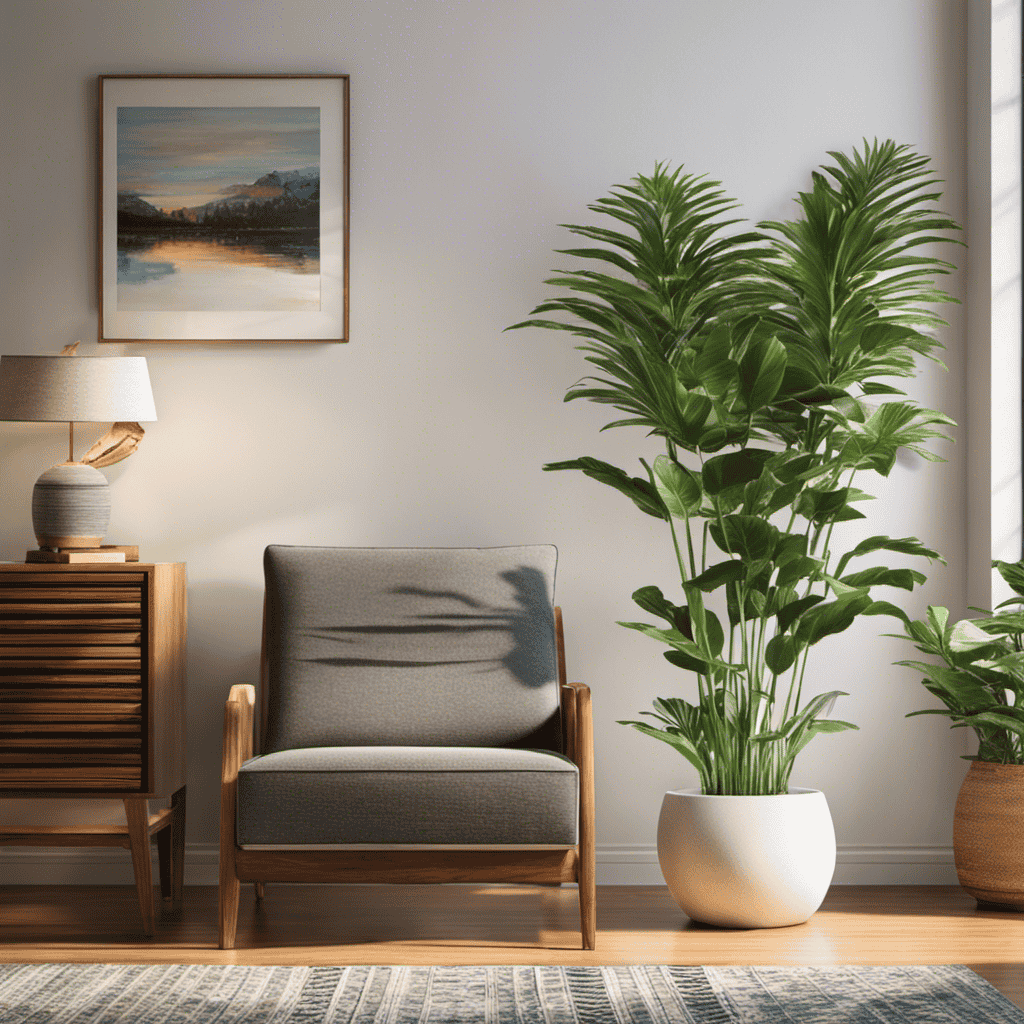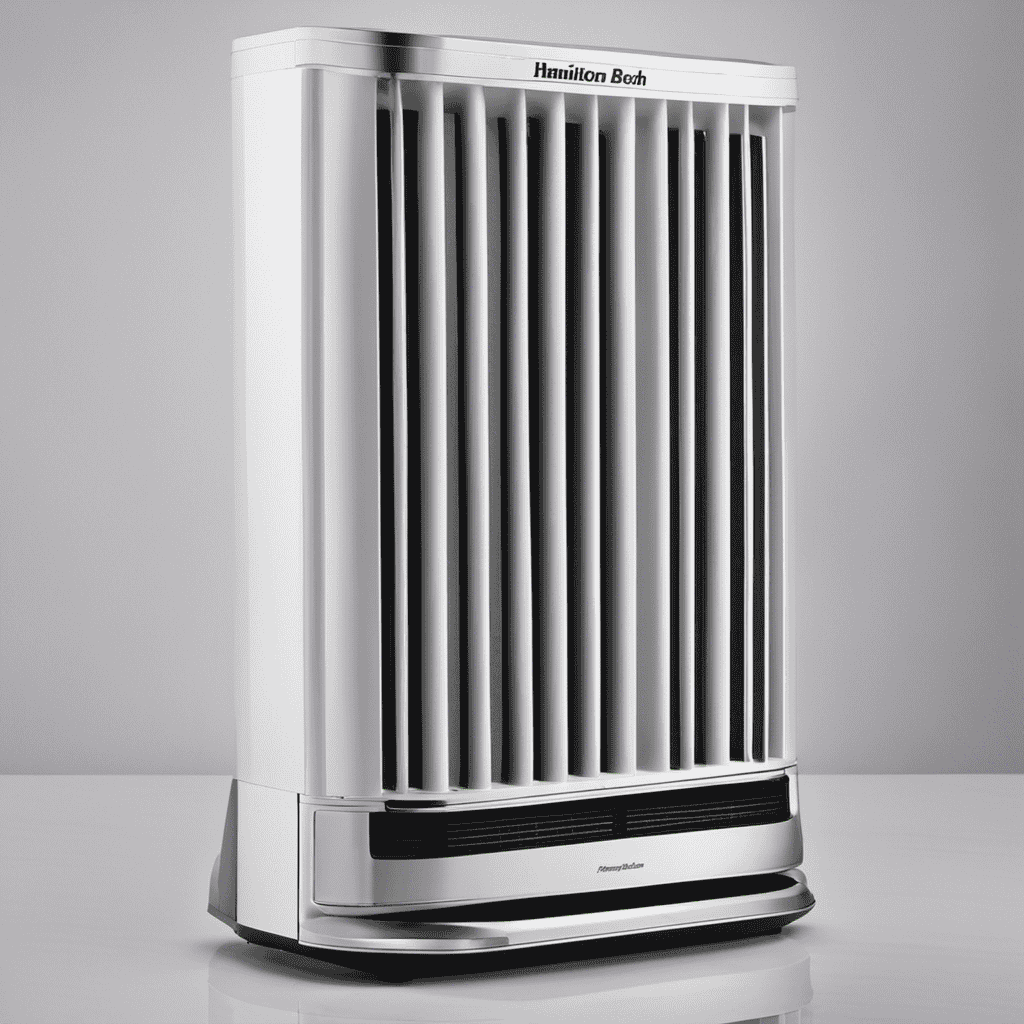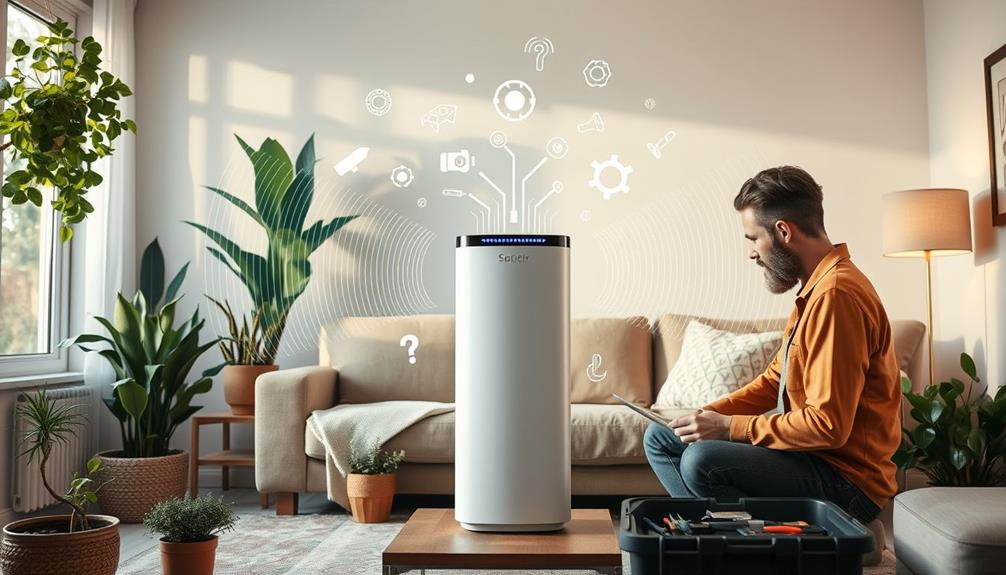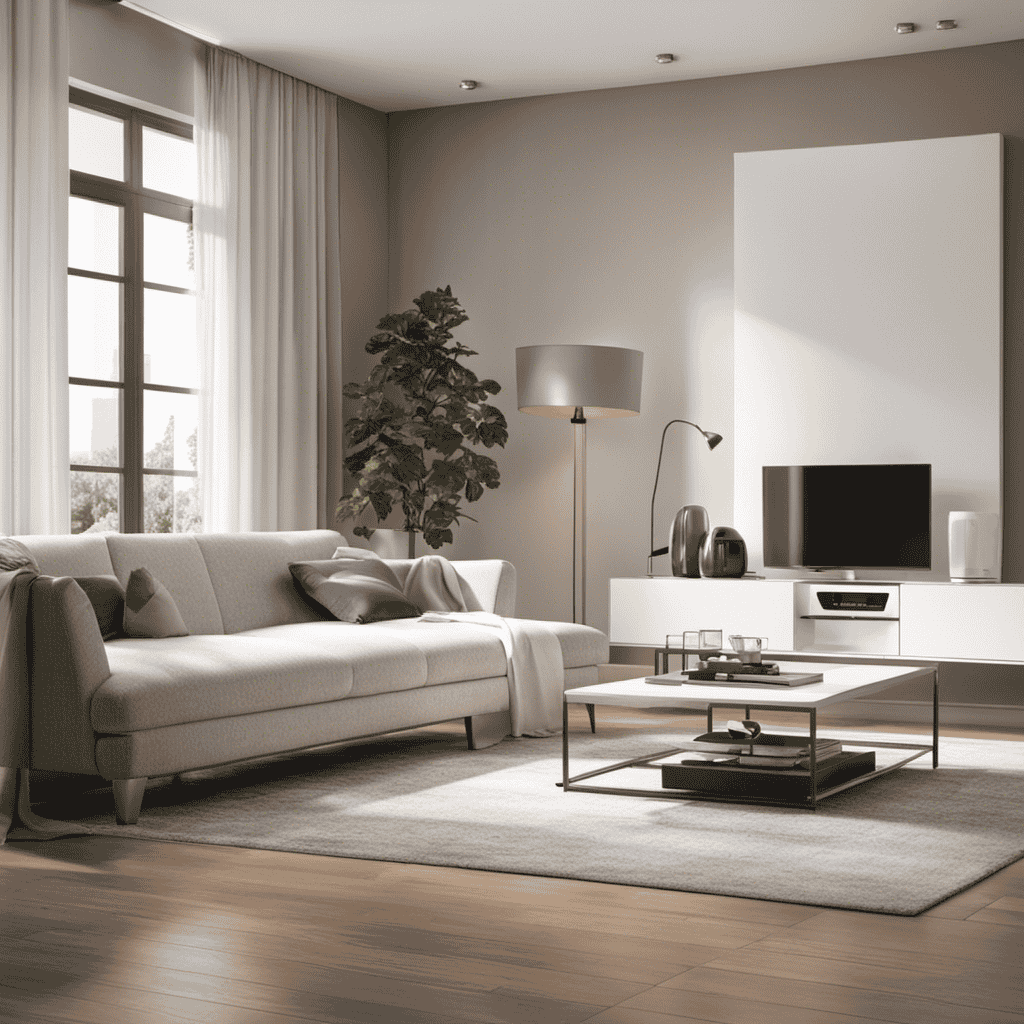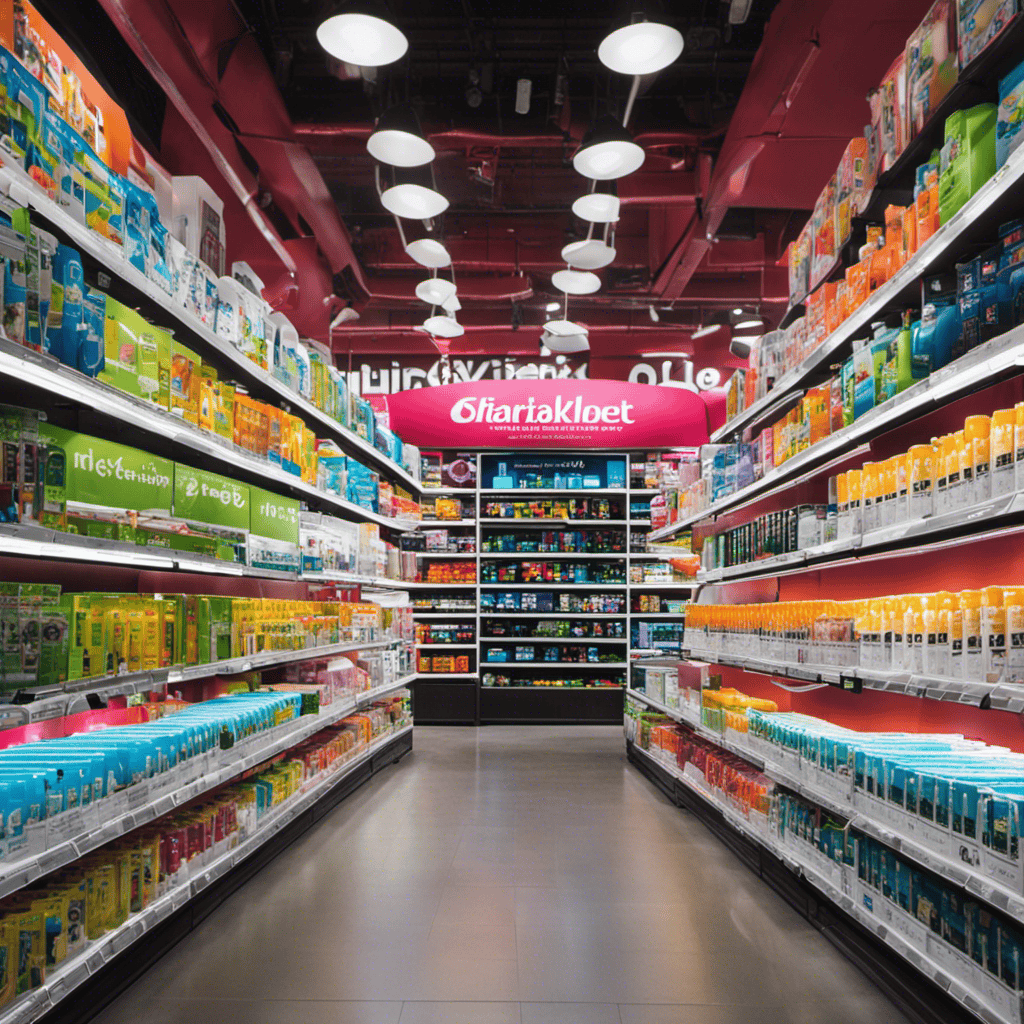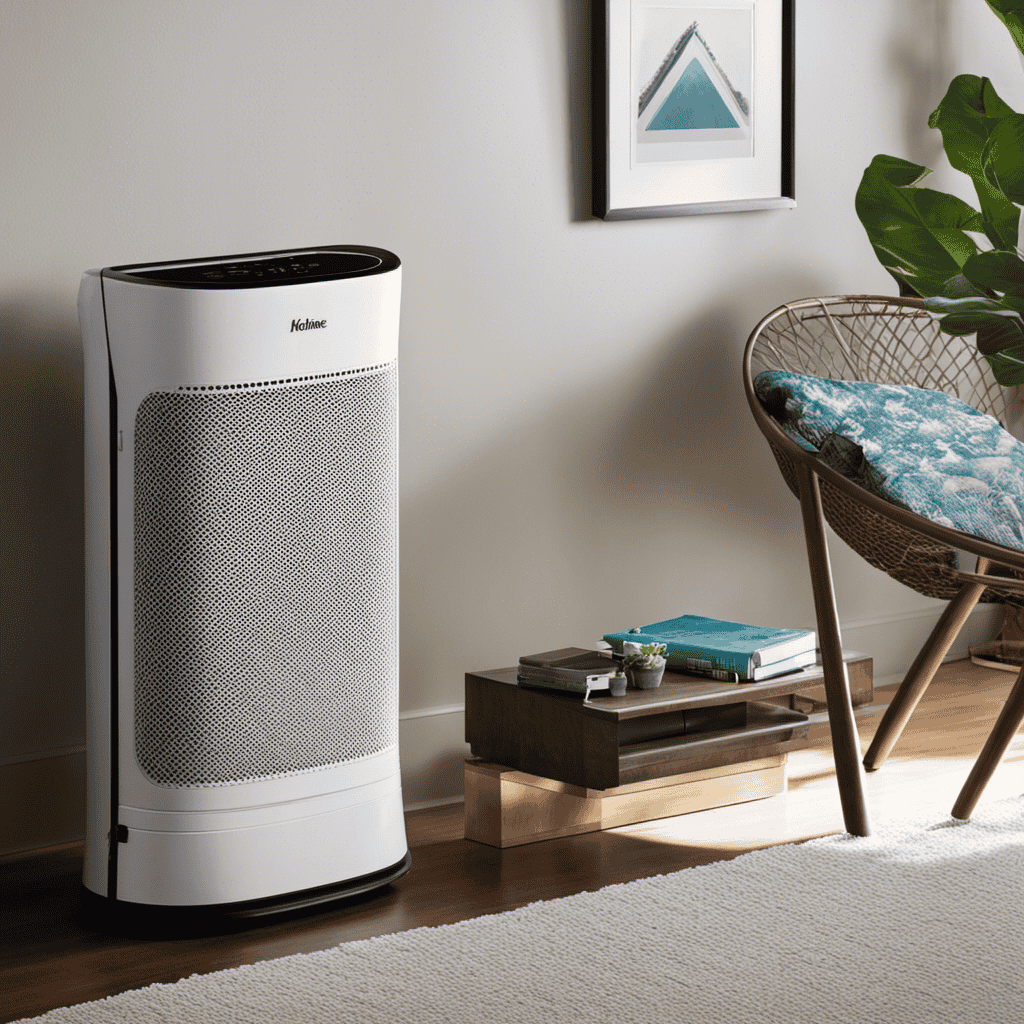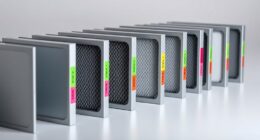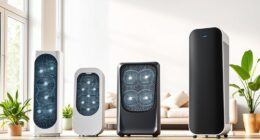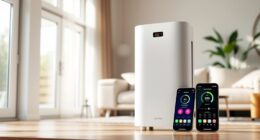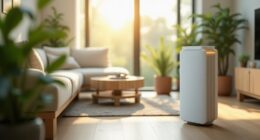Were you aware that on average, individuals spend approximately 90% of their lives indoors? Given this substantial duration spent within enclosed environments, it’s paramount to make certain that our inhaled air is pure and conducive to good health.
That’s where air purifiers come in. In this article, I’ll guide you on the ideal placement for air purifiers in different rooms of your home. From the bedroom to the living room, kitchen, and even children’s rooms, we’ll explore the best locations to position these devices for optimal air purification.
Let’s get started!
Key Takeaways
- Air purifiers are important for maintaining clean and healthy indoor air quality.
- Bedroom air purifiers can improve sleep quality and reduce allergens in the sleeping environment.
- High placement of air purifiers is effective for capturing lighter airborne particles, while low placement is better for capturing heavier particles.
- The placement of air purifiers in different rooms, such as the living room, kitchen, home office, and children’s rooms, should be strategic to ensure optimal air circulation and filtration.
Ideal Placement for Air Purifiers
You should place your air purifier in a central location in the room to ensure optimal air circulation. This is important because air purifiers work by filtering the air and releasing clean, purified air back into the room.
By placing the purifier in a central location, it can effectively circulate air throughout the entire room, maximizing its filtration capabilities.
When it comes to choosing an air purifier, there are several recommended brands that offer high-quality products. These brands include Honeywell, Dyson, and Blueair.
The benefits of using air purifiers are numerous. They can help remove allergens, such as dust, pollen, and pet dander, from the air, making it easier for individuals with allergies or respiratory conditions to breathe. They can also eliminate odors and reduce the presence of harmful pollutants, improving overall indoor air quality.
Now that we understand the ideal placement for air purifiers, let’s explore the recommended rooms for using them.
Recommended Rooms for Air Purifiers
When it comes to improving indoor air quality, one important consideration is the placement of air purifiers in different rooms of your home.
In this discussion, I will focus on two key points: the benefits of having an air purifier in the bedroom and the ideal placement for an air purifier in the living room.
Bedroom Air Purifiers
There’s a great air purifier for bedrooms that I highly recommend. When it comes to choosing the right air purifier for your bedroom, there are several benefits to consider. Not only does it help to improve the air quality in your sleeping space, but it can also reduce allergens and pollutants that can disrupt your sleep. One of the key benefits of a bedroom air purifier is its ability to remove dust, pollen, and pet dander from the air, creating a cleaner and healthier environment for you to sleep in. Additionally, some air purifiers come with features like a night mode or a quiet operation, ensuring that it won’t disturb your sleep.
Here is a table highlighting the benefits of a bedroom air purifier:
| Benefits |
|---|
| Improved air quality |
| Reduced allergens and pollutants |
| Cleaner and healthier sleeping environment |
| Night mode and quiet operation |
Living Room Placement?
Placing an air purifier in the living room can greatly improve indoor air quality. The living room is often a central gathering space in the home, where we spend a significant amount of time. By having an air purifier in this area, we can reduce the presence of airborne pollutants such as dust, pet dander, and allergens, which can have a negative impact on our respiratory health.
Additionally, air purifiers in the living room can help eliminate odors from cooking, smoking, or pets, creating a more pleasant environment. To maximize the benefits of a living room air purifier, regular maintenance is essential. This includes changing the filters as recommended by the manufacturer, cleaning the unit regularly, and ensuring proper airflow.
Best Locations for Air Purifiers
When it comes to deciding the best location for your air purifier, two key factors to consider are whether to place it in the bedroom or living room, and whether to position it high or low.
The bedroom is a popular choice for many people as it is where we spend a significant amount of time each day, and having clean air while we sleep can have numerous health benefits.
On the other hand, the living room is often the central hub of activity in a home, making it another important area to consider for air purification.
As for the placement, placing the air purifier at a higher level can help it capture airborne particles more effectively, while placing it lower can target pollutants that settle closer to the ground.
Bedroom or Living Room
You can put your air purifier in either the bedroom or the living room. When deciding where to place your air purifier, there are several factors to consider.
Benefits of having an air purifier in the bedroom vs. the living room:
- Improved sleep quality by reducing allergens and pollutants in the air
- Reduction of asthma and allergy symptoms, especially during the night
- Removal of pet dander and odors, creating a cleaner sleeping environment
- Enhanced overall respiratory health and well-being
Factors to consider when deciding where to place your air purifier:
- Bedroom size and layout: Consider the square footage of your bedroom and ensure the air purifier is suitable for the space.
- Air quality concerns: If you have specific air quality issues in one area, such as high pollen levels in the bedroom, prioritize placing the air purifier there.
- Noise level: Some air purifiers can produce noise, which may affect your sleep. Choose a model with a low noise level or place it in a location that minimizes disturbance.
- Lifestyle and preferences: Consider your daily activities and the amount of time you spend in each room to determine where you would benefit most from clean air.
Overall, the decision of where to place your air purifier depends on your specific needs and preferences. Whether you choose the bedroom or the living room, having an air purifier can greatly improve the air quality and contribute to a healthier living environment.
High or Low Placement?
Having an air purifier placed high or low in a room can impact its effectiveness in filtering the air.
When it comes to high placement, there are several pros and cons to consider. On the positive side, placing the air purifier higher up can help it capture more airborne particles, as they tend to rise with air currents. This can be especially beneficial for capturing allergens and pollutants that are lighter than air. However, on the downside, placing the purifier high up may make it less effective in capturing larger particles that tend to settle closer to the ground.
On the other hand, when it comes to low placement, the impact on air purifier efficiency can also be significant. Placing the purifier closer to the floor can help capture heavier particles that settle there, such as dust and pet dander. However, it may not be as effective in capturing particles that are lighter and tend to remain suspended in the air.
Therefore, it’s important to consider the specific needs and concerns in your environment when deciding on the ideal placement for your air purifier.
Where to Put an Air Purifier in Your Bedroom
To optimize the effectiveness of your air purifier, it’s important to consider the best placement in your bedroom. Proper placement can significantly improve bedroom air quality and maximize the benefits of your air purifier. Here are some key points to keep in mind:
- Position the air purifier near the source of pollutants, such as near the bed or furniture where allergens accumulate.
- Keep the air purifier away from walls and furniture to allow for proper air circulation.
- Place the air purifier at a higher level to capture airborne particles more effectively.
- Avoid placing the air purifier in direct sunlight or near heat sources, as this may affect its performance.
Where to Place Air Purifiers in the Living Room
When placing air purifiers in the living room, it’s important to consider factors such as the size of the room and the placement of furniture.
The ideal height for placing an air purifier in the living room is around waist level, as this allows for better air circulation and filtration.
It’s recommended to position the air purifier in an optimal direction, such as facing towards the center of the room or near the source of pollutants. This helps to ensure that the air purifier effectively captures and filters the airborne particles.
Additionally, it’s important to avoid placing the air purifier near any obstacles or obstructions that could hinder its performance.
Optimal Placement of Air Purifiers in the Kitchen
For better air quality in your kitchen, you should consider placing the air purifier near the sources of pollutants, such as the stove or oven. This will help to capture and remove the particles and odors that are released during cooking.
In addition to this, there are several other benefits of having a kitchen air purifier:
-
Removes cooking odors: An air purifier can effectively eliminate the lingering smells of fried food, spices, and other strong cooking odors.
-
Reduces airborne contaminants: Cooking can release pollutants such as smoke, grease particles, and volatile organic compounds (VOCs) into the air. An air purifier can help to reduce these contaminants, improving the overall air quality.
-
Prevents cross-contamination: By capturing and trapping airborne particles, an air purifier can help prevent the spread of bacteria, viruses, and allergens.
-
Easy maintenance: Regular cleaning and maintenance of your kitchen air purifier will ensure its optimal performance. This includes changing the filters, cleaning the exterior surfaces, and checking for any signs of wear or damage.
Where to Position an Air Purifier in the Home Office
Placing an air purifier in the home office can greatly improve the air quality for a healthier and more productive work environment.
When considering positioning options for your air purifier, desk placement is an important factor to consider. Ideally, the air purifier should be placed near your desk, within a few feet of where you spend the majority of your time working. This allows the air purifier to effectively clean the air in your immediate vicinity, reducing the concentration of airborne pollutants.
Additionally, positioning the air purifier near your desk ensures that you are breathing in the cleanest air possible while you work. Remember to avoid placing the air purifier in areas with obstructions, such as behind furniture or in corners, as this can hinder its performance.
Where to Place Air Purifiers in Children’s Rooms
To maximize the benefits of an air purifier in your child’s room, it’s important to choose the right location for optimal air quality. Here are some key factors to consider when placing air purifiers in kids’ rooms:
- Keep it at least 3 feet away from walls and furniture to ensure proper airflow.
- Place it near the source of pollutants, such as near the changing table or crib.
- Position it at a height that is safe and out of reach of curious little hands.
- Consider placing it near the sleeping area to improve air quality during the most crucial hours of rest.
By following these placement guidelines, you can ensure that the air purifier effectively removes allergens, pollutants, and other harmful particles from your child’s nursery.
This will help create a healthier and safer environment for your little one to grow and thrive in.
Strategic Placement of Air Purifiers in Open Floor Plans
Consider positioning an air purifier in the central area of your open floor plan to ensure optimal air circulation and purification throughout the entire space.
Strategic placement of air purifiers in open floor plans offers numerous benefits. Firstly, it allows for efficient removal of airborne pollutants such as dust, pet dander, and allergens that can accumulate in larger areas. By placing the air purifier in a central location, it can effectively capture and filter these pollutants as they circulate throughout the space.
Secondly, strategic placement ensures equal distribution of clean air, reducing the risk of stagnant or polluted areas. This is especially important in open floor plans where there are no walls or partitions to separate different zones.
Lastly, by strategically placing the air purifier, you can maximize its coverage and effectiveness, ensuring that every corner of your open floor plan benefits from enhanced air quality.
Frequently Asked Questions
Can I Place My Air Purifier Near a Window or an Open Door?
Yes, you can place your air purifier near a window or an open door. However, it is more beneficial to place it in the kitchen to remove cooking odors. Additionally, placing it near plants can improve air quality.
Should I Put My Air Purifier on the Floor or on a Tabletop?
I prefer placing my air purifier on the floor for optimal air circulation. It effectively removes pollutants from the entire room. However, if space is limited, a tabletop placement can still provide some benefits.
Is It Necessary to Have Multiple Air Purifiers in One Room?
It is beneficial to have multiple air purifiers in one room for maximum effectiveness. Placement should be strategic, considering factors such as room size and layout, to ensure optimal air purification throughout the space.
Can I Place My Air Purifier Next to Other Electronic Devices?
Placing my air purifier next to other electronic devices is not recommended. It can interfere with their performance and potentially damage them. To ensure proper air purifier maintenance and maximize the benefits in bedrooms, it’s best to keep them separate.
Where Should I Avoid Placing My Air Purifier in Order to Maximize Its Effectiveness?
To maximize my air purifier’s effectiveness, I should avoid placing it near sources of pollution like smoking areas or kitchen stoves. It’s best to position it in a central location with good airflow for optimal air purification.
Conclusion
After exploring the ideal placement for air purifiers in various rooms of the house, it is clear that strategic positioning is crucial for optimal air purification.
By placing an air purifier in the bedroom, living room, kitchen, home office, and children’s rooms, we can create a clean and healthy environment for ourselves and our loved ones.
Just imagine the fresh and pure air circulating throughout your home, eliminating allergens and pollutants, allowing you to breathe deeply and sleep peacefully.
Embrace the power of air purifiers and transform your living space into a sanctuary of clean air.
